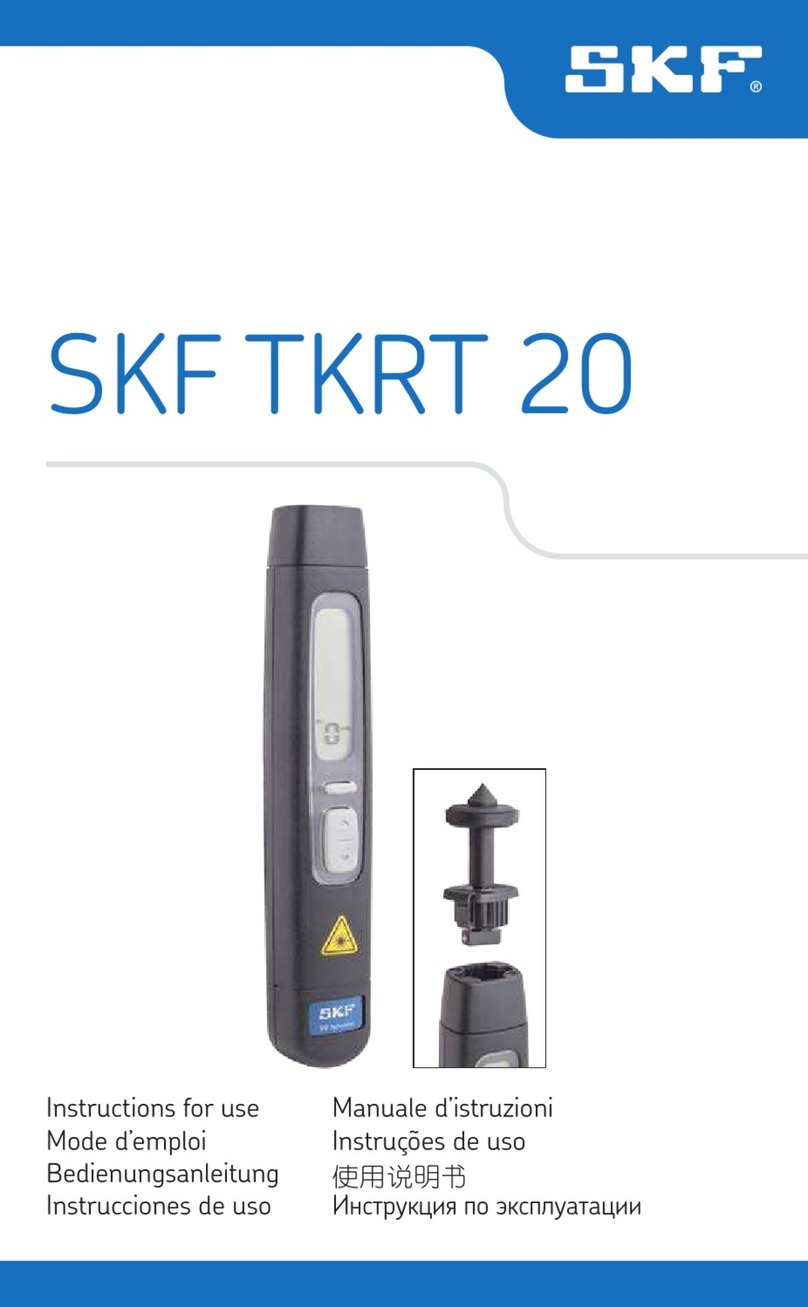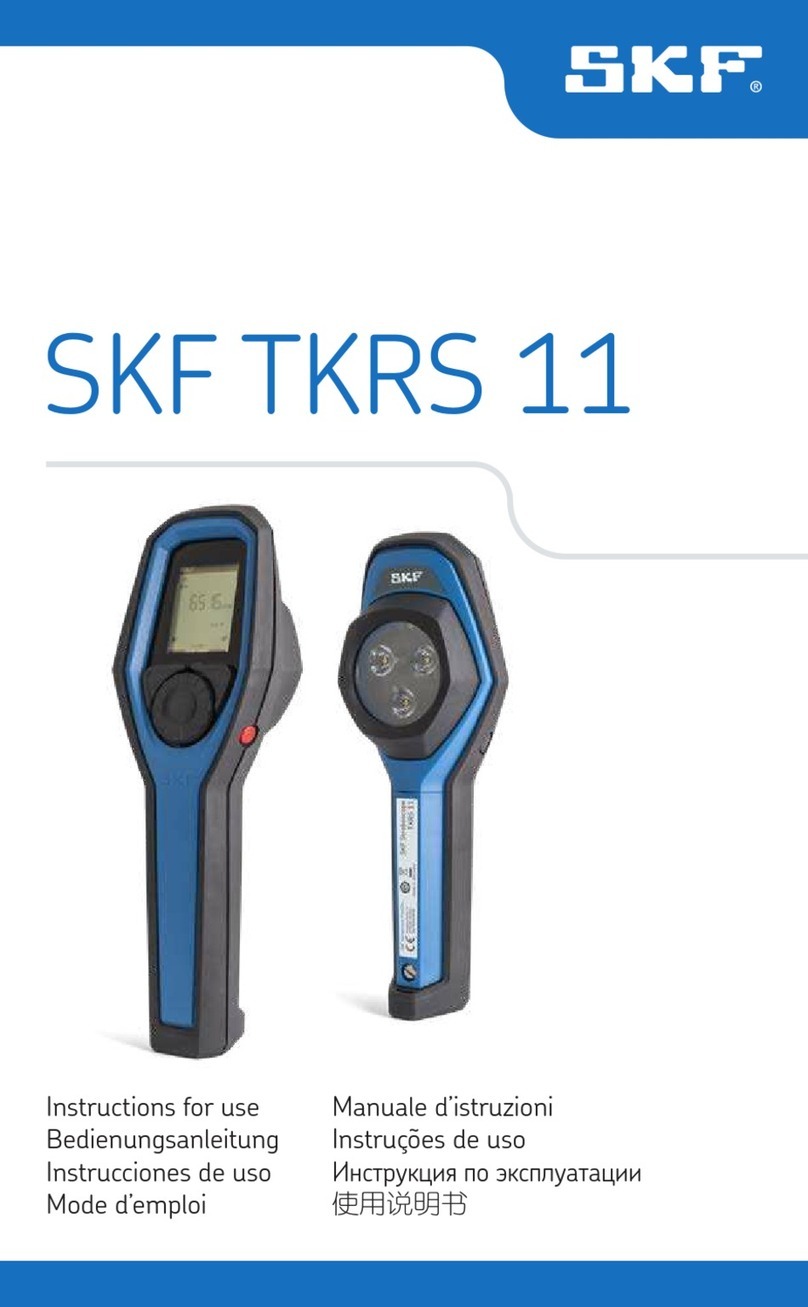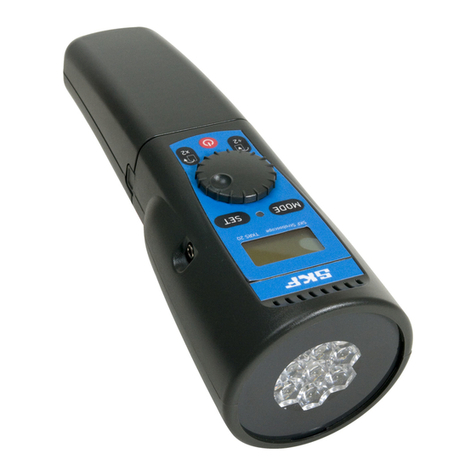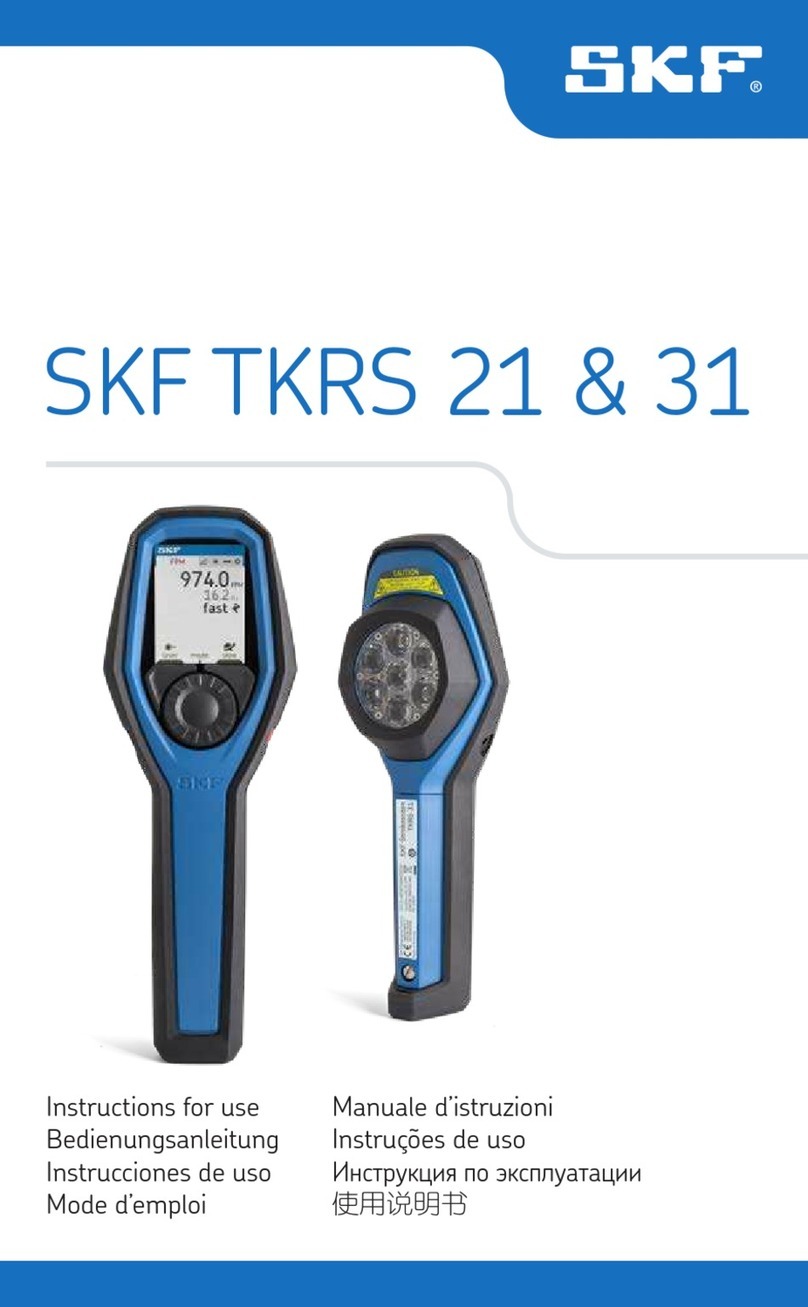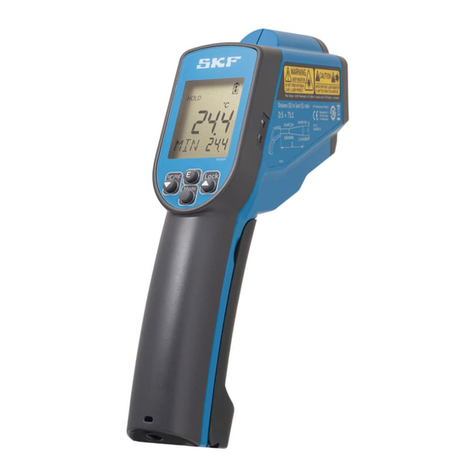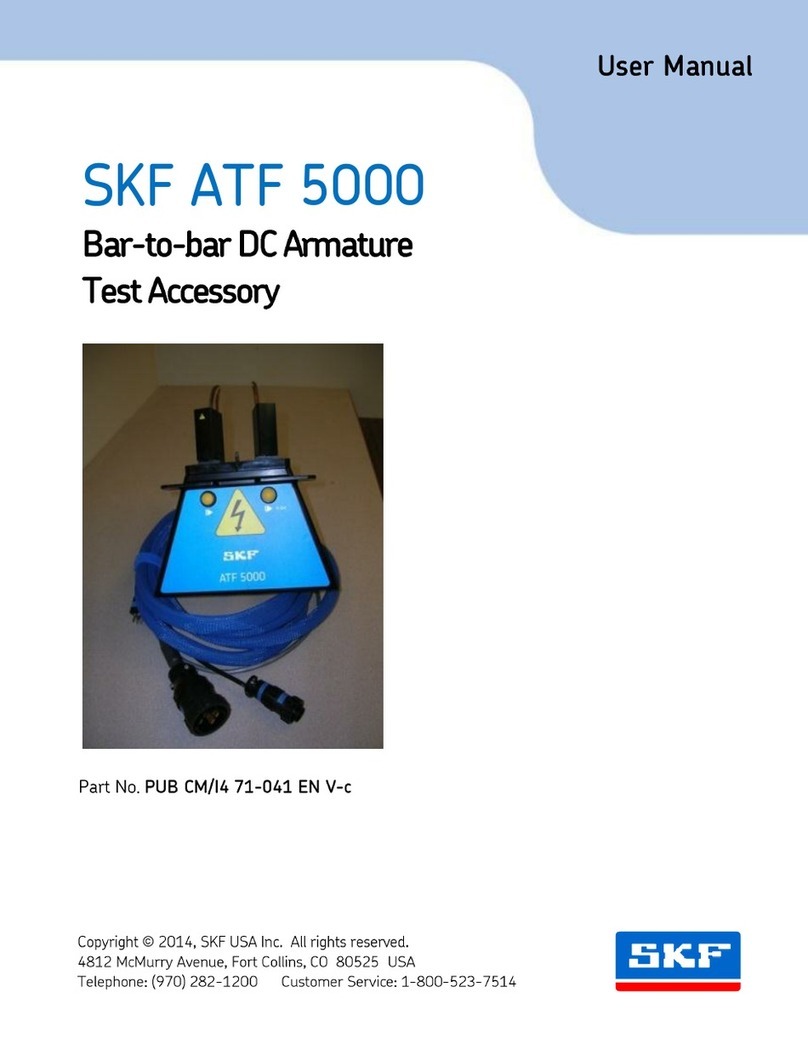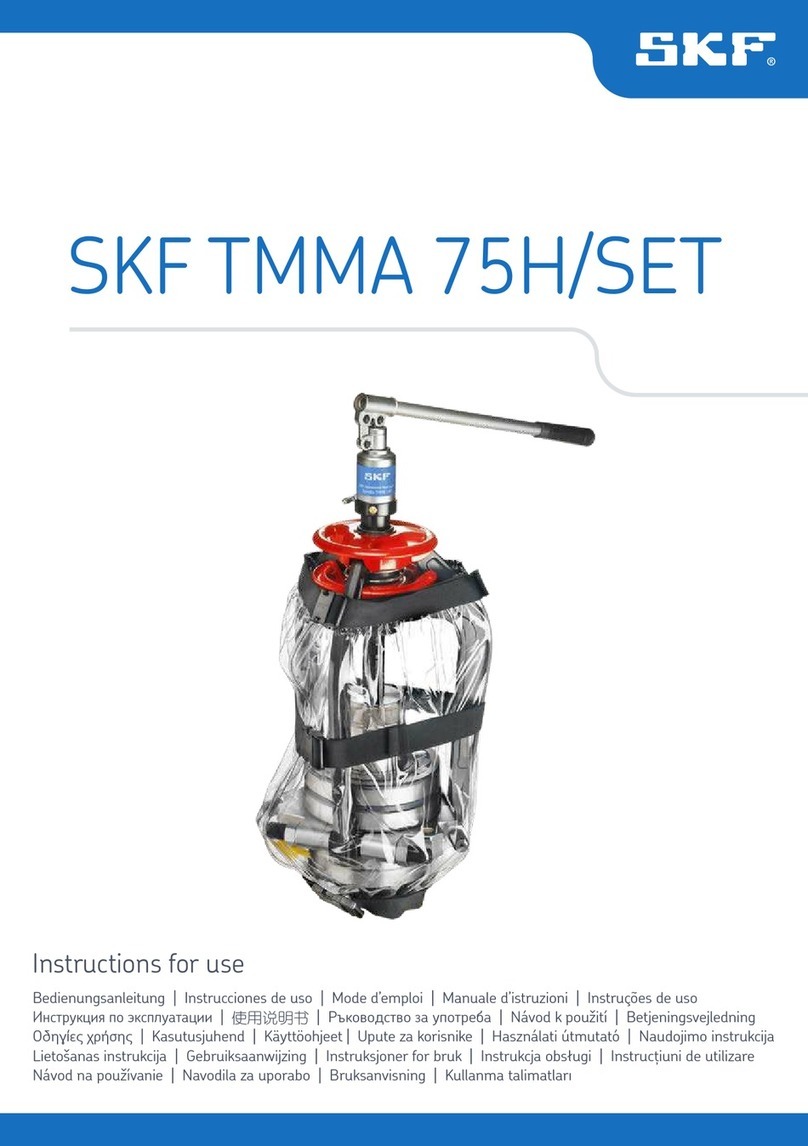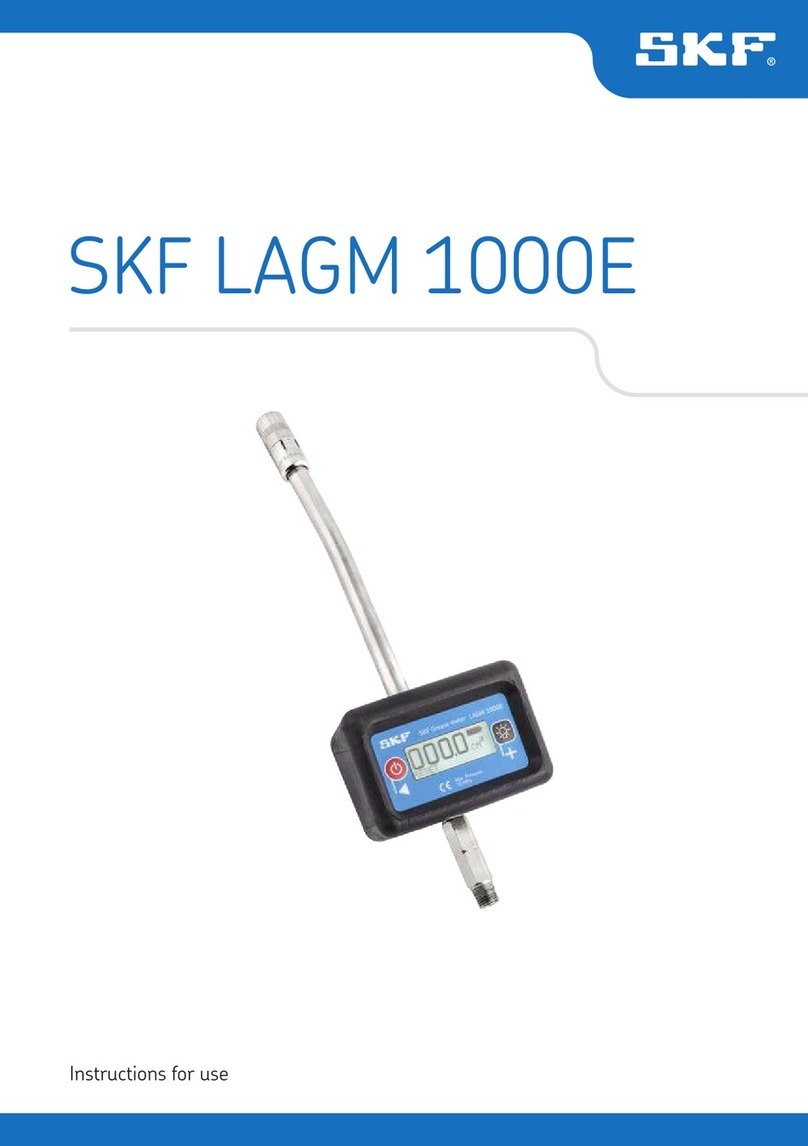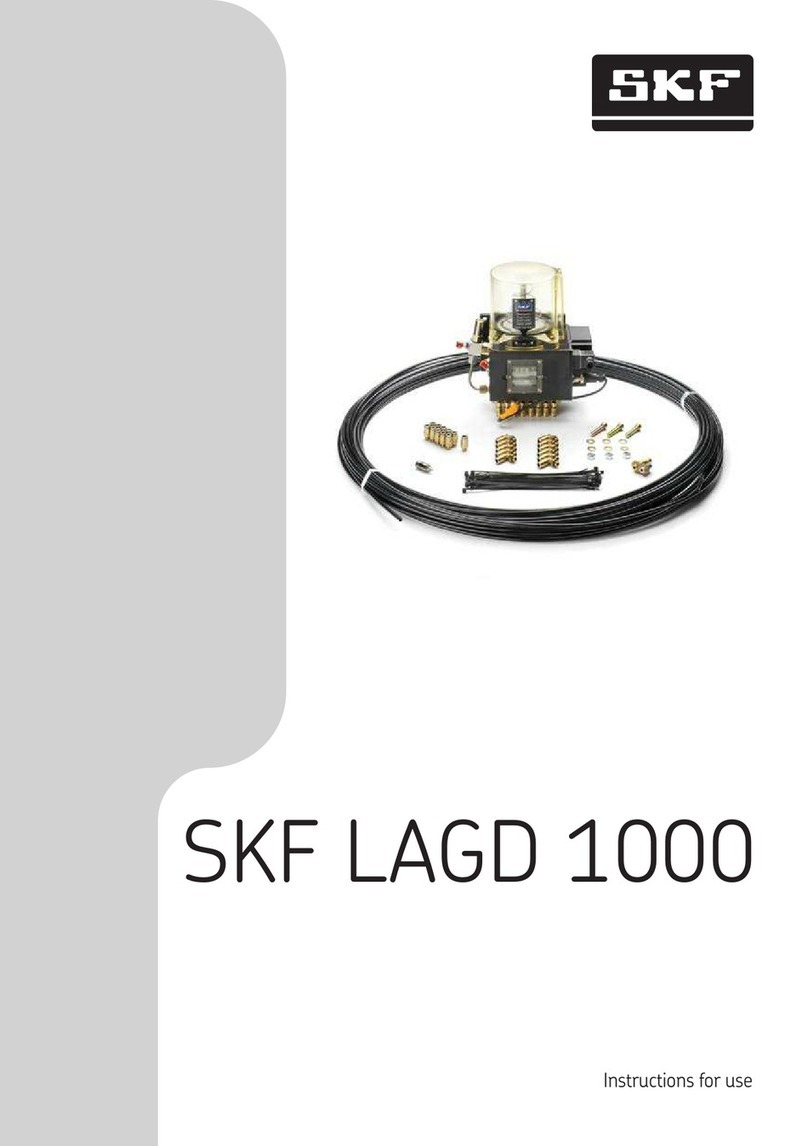
2SKF TKGT 1
Safety recommendations..........................................................................................4
1. Introduction .....................................................................................................5
1.1 Principle of operation.................................................................................................... 5
2. Content ............................................................................................................6
2.1 Technical data................................................................................................................. 8
3. Analysis Protocol ..............................................................................................9
3.1 Collecting information................................................................................................... 9
3.1.1 Application conditions .......................................................................................10
3.1.2 Grease in use .....................................................................................................10
3.2 Collecting grease samples ..........................................................................................11
3.2.1 Material ..............................................................................................................11
3.2.2 Sampling procedure .........................................................................................12
3.2.3 Recommendations.............................................................................................13
3.3 First Visual inspection ................................................................................................14
3.3.1 Examples ............................................................................................................14
3.4 Consistency test ...........................................................................................................15
3.4.1 Principle of operation ......................................................................................16
3.4.2 Material...............................................................................................................17
3.4.3 Test procedure ..................................................................................................17
3.4.4 Recommendations.............................................................................................19
3.5 Oil bleeding test ...........................................................................................................21
3.5.1 Principle of operation........................................................................................21
3.5.2 Material...............................................................................................................22
3.5.3 Test procedure ..................................................................................................22
3.5.4 Recommendations.............................................................................................26
3.6 Contamination test ......................................................................................................27
3.6.1 Principle of operation........................................................................................27
3.6.2 Material...............................................................................................................27
3.6.3 Test procedure ..................................................................................................28
3.6.4 Recommendations ...........................................................................................31
3.7 Reporting ......................................................................................................................32
3.7.1 Recommendations.............................................................................................32
4. Reference cases..............................................................................................33
4.1 Grease shelf life / Quality ...........................................................................................34
4.2 Grease life / trend analysis .........................................................................................35
4.3 Grease selection...........................................................................................................36
4.4 Contamination..............................................................................................................37
4.5 Summary......................................................................................................................38
Table of contents
Original instructions












